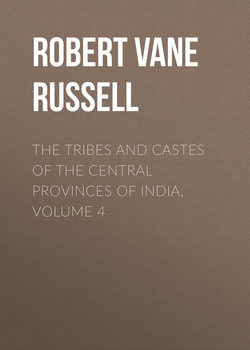Читать книгу The Tribes and Castes of the Central Provinces of India, Volume 4 - Robert Vane Russell - Страница 45
Part II
Articles on Castes and Tribes
Kumhār—Yemkala
Vol. IV
Kurmi
6. The marriage-shed or pavilion
ОглавлениеBefore the wedding the women of the family go out and fetch new earth for making the stoves on which the marriage feast will be cooked. When about to dig they worship the earth by sprinkling water over it and offering flowers and rice. The marriage-shed is made of the wood of the sāleh tree,57 because this wood is considered to be alive. If a pole of sāleh is cut and planted in the ground it takes root and sprouts, though otherwise the wood is quite useless. The wood of the kekar tree has similar properties and may also be used. The shed is covered with leaves of the mango or jāmun58 trees, because these trees are evergreen and hence typify perpetual life. The marriage-post in the centre of the shed is called Magrohan or Khām; the women go and worship it at the carpenter’s house; two pice, a piece of turmeric and an areca-nut are buried below it in the earth and a new thread and a toran or string of mango-leaves is wound round it. Oil and turmeric are also rubbed on the marriage-post at the same time as on the bride and bridegroom. In Saugor the marriage-post is often a four-sided wooden frame or a pillar with four pieces of wood suspended from it. The larger the marriage-shed is made the greater honour accrues to the host, even though the guests may be insufficient to fill it. In towns it has often to be made in the street and is an obstacle to traffic. There may be eight or ten posts besides the centre one.
57
Boswellia serrata.
58
Eugenia Jambolana.
